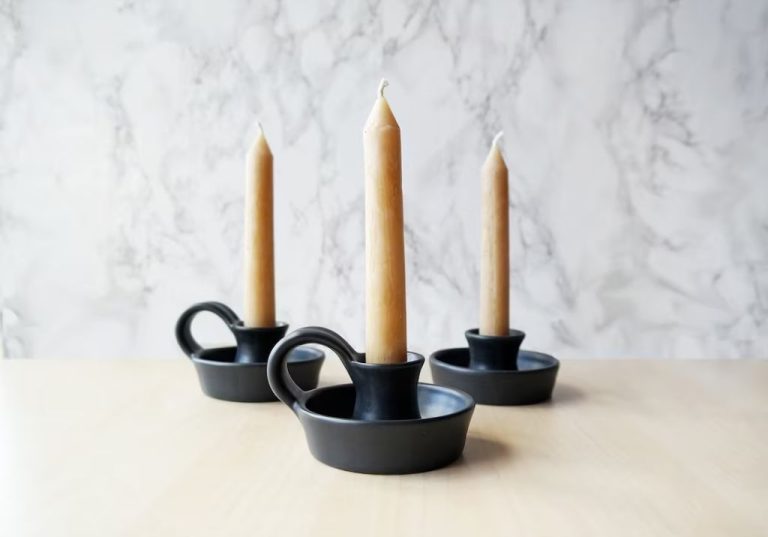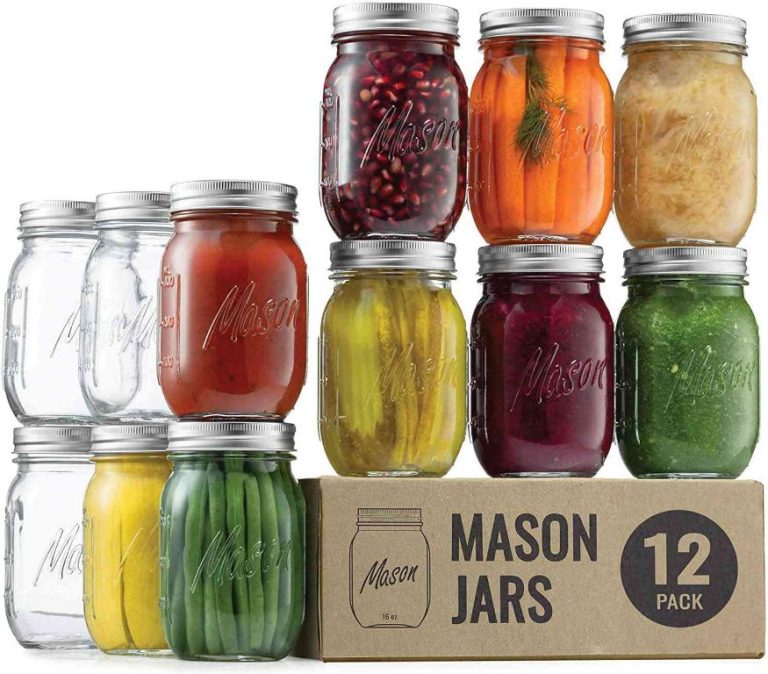Are Ceramic Tumblers Good?
Ceramic tumblers are insulated drinkware made from ceramic materials. Unlike plastic or stainless steel tumblers, ceramic tumblers have an inner wall made from ceramic that is surrounded by an air gap insulation layer and enclosed in an outer wall, also ceramic. This double-wall construction helps retain heat and keep drinks hotter for longer.
Ceramic tumblers are popular choices for hot beverages like coffee, tea, and hot chocolate. The ceramic inner wall does not impart any metallic taste to drinks. Ceramic is also an excellent insulator that maintains the desired drinking temperature. Many ceramic tumblers have ergonomic designs with handles and lids for convenient portability.
Pros of Ceramic Tumblers
One of the biggest pros of ceramic tumblers is their excellent insulating properties that keep drinks hot or cold for longer periods of time. Ceramic is a poor conductor of heat, which enables it to retain temperature exceptionally well. According to Kyocera, their vacuum-insulated ceramic mugs can maintain the temperature of hot or cold drinks due to the shape and layered construction (source). The ceramic interior wall, vacuum seal and stainless steel exterior minimize heat transfer to keep beverages at the ideal temperature.
Compared to plastic or glass, ceramic tumblers stand out for their superior insulation. A study by the American Ceramic Society found that ceramic mugs could keep water above 160°F for over 3 hours, while plastic and glass mugs couldn’t retain heat for more than 1 hour (source). The excellent thermal properties of ceramic make these tumblers a great choice for enjoying hot coffee or tea over longer periods of time without losing heat.
Cons of Ceramic Tumblers
One of the biggest downsides of ceramic tumblers is that they can be more fragile than tumblers made from other materials like stainless steel or plastic. Ceramic is a brittle material that can crack or chip if dropped. According to Stainless Steel vs Ceramic Tumblers: A Complete Guide, ceramic tumblers generally require more care in handling and cleaning to prevent damage.
Ceramic tumblers may not withstand drops and impacts as well as steel or plastic alternatives. If knocked over or dropped, especially onto a hard surface, ceramic tumblers are prone to cracks, chips, and breaks. This makes ceramic a poor choice if you want a travel mug for on-the-go use where it may get banged around in a bag. The material is simply more fragile than metal or plastic.
Additionally, the glaze on the interior of ceramic tumblers can start to chip and wear over time with repeated use. Chips in the glaze expose the porous ceramic material underneath, which can harbor bacteria if not properly cleaned. So ceramic tumblers may not have the long-lasting durability of stainless steel.
Heat Retention
Ceramic is an excellent heat insulator due to its low thermal conductivity. According to Ceramique-technique.com, ceramics have very low thermal conductivity compared to metals and plastics. This means heat travels slowly through ceramic, allowing it to retain heat effectively.

The thermal conductivity of ceramic ranges from 1-10 W/mK, while metals like aluminum have a thermal conductivity around 200 W/mK. The strong ionic and covalent bonding between atoms in ceramics reduces vibrations, which limits heat transfer. The porous structure of ceramic also traps air pockets, which resist heat flow.
According to Substech.com, ceramics can withstand very high temperatures up to 1000-1600°C depending on the material. The refractory properties allow ceramic to insulate and retain heat whether for cooking vessels or building materials.
Durability
Ceramic tumblers can be prone to chipping and cracking if dropped or handled roughly. The brittle nature of ceramic means that it does not bend or absorb shock like plastic or metal. According to research, ceramic mugs and cups have a higher breakage rate compared to other materials like glass or porcelain (Source).
Small chips in ceramic can quickly lead to larger cracks. Over time, rough handling and repeated impacts like being dropped in the sink or bumped around in a bag can cause the glaze to crack or shatter. Quality glazes are important for minimizing chipping and increasing durability. Well-made ceramic with thick walls and high-fired glazes is generally more durable and resistant to cracks than cheaper or thinner options.
For maximum durability, handwash ceramic tumblers and avoid any harsh impacts that can damage the glaze. Inspect ceramic drinkware frequently for small chips and immediately stop using anything that has cracked. With proper care, higher quality ceramic tumblers can potentially last for years of regular use.
Design
Ceramic tumblers come in a huge variety of colors, patterns, and designs. Many artisans create beautiful one-of-a-kind looks by hand-painting elaborate motifs or glazing each piece in custom mixes of colorful clays (https://www.etsy.com/market/ceramic_tumbler). The handmade nature means no two tumblers are exactly alike. You can find minimalist solid colors or opt for busier geometric shapes and floral designs. The range of artistic options makes it easy to find ceramic tumblers that match your personal taste and style.
Some ceramic artists also create sets of tumblers in coordinating colors or complementary patterns for a cohesive look. Customization is another possibility – many ceramic artists on Etsy will personalize a tumbler with a name, meaningful quote, or other special touches (https://www.etsy.com/market/ceramic_tumbler). The handmade process allows for one-of-a-kind ceramic tumblers that function beautifully and reflect your unique personality.
Care
When it comes to cleaning ceramic tumblers, handwashing is generally recommended over dishwasher cleaning. The high heat and harsh detergents used in dishwashers can damage the ceramic coating over time. To handwash a ceramic tumbler, fill it with warm soapy water and allow that to sit for a few minutes. Then gently scrub the interior with a soft sponge or brush to lift stains. Rinse thoroughly. For tough coffee or tea stains, let the tumbler soak for 30 minutes in a vinegar and water solution (1 part vinegar to 3 parts water). The acidity in the vinegar will help break down the stains. Then scrub and rinse as normal. Allow the tumbler to fully air dry upside down on a dish rack before its next use.
While ceramic tumblers are quite durable, handwashing helps preserve their integrity and keep them looking their best for longer. It also allows you to give stained areas extra scrubbing attention. Just take care not to use anything too abrasive when scrubbing by hand. Overall, the small amount of extra effort needed to handwash generally outweighs the risks of machine washing for most ceramic tumblers.
Cost
Ceramic tumblers often have a higher upfront cost compared to plastic tumblers. According to research from G.E.T Serveware, when factoring in a two year cost of ownership model, 16 oz. plastic tumblers cost $57.98 for 432 tumblers, while 16 oz. glass tumblers cost $432 for the same number of tumblers (https://www.getserveware.com/cost-plastic-vs-glass-drinkware/). So while glass costs almost 8 times more upfront, plastic tumblers need to be replaced much more frequently. Overall, glass tumblers end up costing around 86% more than plastic tumblers over two years of use.
This cost difference applies to ceramic tumblers as well. Like glass, ceramic is more expensive than plastic as a raw material. According to research, the production costs for ceramics are generally higher than plastic due to more intensive processing requirements (https://wzr.cc/en/ceramic-vs-plastic/). So the upfront cost of a ceramic tumbler is likely to be higher than a comparable plastic tumbler.
Sustainability
Ceramic tumblers are considered an environmentally friendly and sustainable option for drinkware. According to terredesoules.com, ceramics are made from natural materials like clay, quartz and feldspar that can be reused and recycled. Unlike plastics, ceramics do not leach chemicals or microplastics into foods and liquids. Ceramic tumblers can last for many years if cared for properly, avoiding waste from disposable cups.
Ceramic tumblers are reusable and recyclable at the end of their lifespan. According to baldocer.com, ceramics are considered more eco-friendly than single-use plastics and paper cups. The raw materials for ceramic production are abundant and renewable. With proper recycling, ceramics can be ground up and reused in production of new ceramic materials. This makes ceramic tumblers a sustainable option compared to plastic drinkware.
Conclusion
Overall, ceramic tumblers have both advantages and disadvantages compared to other materials like plastic or stainless steel. On the plus side, ceramic excels at retaining heat, comes in beautiful designs, and is generally an eco-friendly option. The downsides are that ceramic can chip or crack if dropped, requires careful handwashing, and costs more than other materials.
When deciding if ceramic tumblers are a good choice, consider how you plan to use it. If you want something durable for on-the-go use, stainless steel may be better. But forheating and enjoying hot or cold drinks at home, ceramic is an excellent option. Look for high quality, artisan-made ceramic with a comfortable shape and size for your needs. With proper care, a ceramic tumbler can last for years.



